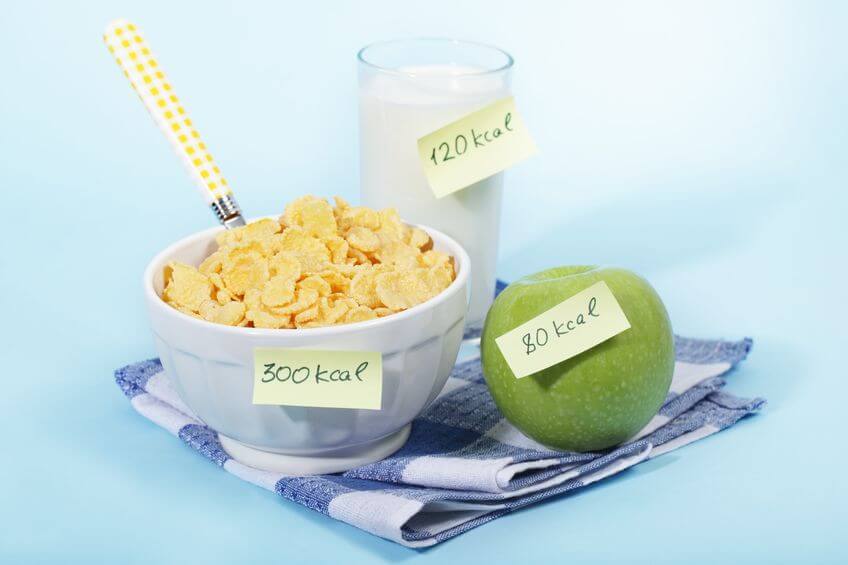If you dread the idea of “dieting,” I understand.
Most diets feel more like punishment than self-improvement.
Instead of educating you on how the metabolism truly works and giving you the tools you need to manage it effectively, most diet “gurus” resort to fearmongering and food restriction instead.
If you want to lose fat or build “lean muscle,” they say, you can kiss just about everything you like eating goodbye.
Grains…anything containing gluten or sugar…high-glycemic carbs…red meat…processed foods…fruit…dairy…caloric beverages…granola…it’s all gotta go.
All your toys. Throw all that shit into the fire. No pain no gain! Suffer now and live the rest of your life a champion!
Maybe you’re not up to this, you think. Maybe you’re not tough enough. You’ve always had trouble with willpower and dedication. Maybe abs aren’t really worth it.
On the other hand, who knows, maybe all you need in life is chicken, eggs, and vegetables? Starving children in Africa have it much worse…
Stop! Put the Kool-Aid down and slowly walk away.
What if I told you that you could dramatically transform your body eating foods you actually like…every day…7 days per week?
What if all you had to do to build muscle and lose fat was follow a handful of flexible dietary guidelines…not starve and deprive yourself?
And what if I promised you could forever break free of the restrictions and anxieties most people associate with dieting and learn to love it instead?
Too good to be true, you think? Downright heresy?
I know. I used to think the same thing. I now know the truth, though, and in this article, I’m going to break it all down for you.
Let’s get to it.
Table of Contents
+Want to listen to more stuff like this? Check out my podcast!
Why Flexible Dieting Isn’t a “Diet”

What kind of “diet” worth a damn has you be less strict about the foods you eat?
How can you possibly lose fat eating bucketfuls of carbs every day?
Which self-respecting “dieter” would dare eat sugary treats with a clean conscience?
Such questions represent some of the common criticisms of flexible dieting. They also show why it’s often considered the “anti-diet.”
Much of the controversy stems from the fact that flexible dieting means different things to different people. And, like a superpower, it can be used for good or evil.
So, for the sake of thoroughness, let’s start with something of an outline for flexible dieting. Here’s how it shakes out:
- How much you eat is more important than what.
- You should tailor your daily food choices to your preferences, goals, and lifestyle.
- Forgive dietary lapses and “keep calm and carry on.”
- Long-term compliance is the key to sustainable improvements.
Basically, flexible dieting is a way to take your body’s basic energy and nutritional needs and turn them into an eating regimen that you actually enjoy.
- Thou shalt not deprive yourself of foods you like.
- Thou shalt eat on a schedule you like.
- Thou shalt view dieting as a lifestyle, not a “quick fix.”
- Thou shalt accept dietary blunders and calmly get back in the saddle.
These are the commandments of flexible dieting. And they’re getting more and more popular because they work.
Now, that all sounds good in theory but you’re probably wondering how the hell it plays out in practical terms.
Let’s find out.
How Flexible Dieting Works

Let’s take a look at each of the points above to gain a better understanding of how to make flexible dieting works.
How much you eat is more important than what.
This statement is almost blasphemous in today’s diet culture.
The cult of “clean eating” has won wide acceptance and, while it has its heart in the right place, it really misses the forest for the trees.
Specifically, what most “clean eaters” don’t realize is the nutritional value of food has little to do with its effect on your body composition.
Sure, eating plenty of nutritious foods is important for overall health and longevity, but there are no foods that directly cause weight loss or weight gain. Sugar isn’t your enemy and “healthy fats” aren’t your savior.
The key to understanding these “shocking” statements is understanding the concept of “energy balance,” which is the relationship between the amount of energy you eat and the amount you burn.
The “boring” physiological reality is that meaningful weight loss requires eating less energy than you expend and meaningful weight gain requires the opposite (eating more than you burn).
When you eat less energy than you burn, you’re in what’s known as a “negative energy balance” or “calorie deficit.” This results in weight loss. And when you eat more than you burn, you’re in a “positive energy balance” or “calorie surplus.” This results in weight gain.
Thus, in this sense, a calorie is a calorie.
Eat too much of the “cleanest” foods in the world and you will gain weight. Maintain a calorie deficit while following a “gas station diet” of the most nutritionally bankrupt crap you can find and you will lose weight.
This is why Professor Mark Haub was able to lose 27 pounds on a diet of protein shakes, Twinkies, Doritos, Oreos, and Little Debbie snacks. He simply ate fewer crappy calories than his body burned and, as the first law of thermodynamics dictates, this resulted in a reduction in total fat mass.
That said, a calorie is not a calorie when it comes to optimizing body composition.
When you want to build muscle and minimize fat gain, or lose fat and not muscle, what you eat matters. Well, not the specific foods per se, but how those foods break down in terms of macronutrients.
Tailor your daily food choices to your preferences, goals, and lifestyle.
You should eat foods you like. Every meal. Every day. For the rest of your life.
Yes, you read that right.
And no, I’m not talking about only getting to choose from foods generally recognized as “healthy,” like fruits, vegetables, nuts, and seeds.
If you want to maximize your health, longevity, and overall well-being, you want to get the majority of your calories from these types of foods. That’s true.
But once you’re doing that, you “earn” the right to also eat foods often demonized as “unhealthy,” like pizza, pasta, ice cream, cereal, bagels, and french fries.
As a general rule of thumb, if you get 80% of your daily calories from relatively unprocessed, nutrient-dense foods, you can fill the remaining 20% with foods most diet “gurus” frown upon.
My “daily indulgences” range from ice cream to chocolate to muffins to pancakes with syrup to cookies. It just depends what I’m in the mood for and how many calories I can “afford.”
This all applies regardless of your body goals as well. You can be as lean, muscular, and healthy as you want with flexible dieting, eating just as I outline above.
And this isn’t theory–I’m speaking from experience. Case in point:
View this post on Instagram
That’s how I look year-round and I maintain it practicing what I preach:
- Flexible dieting exactly as laid out in this article
- 4 to 6 hours of weightlifting per week
- 1 hour of HIIT cardio per week
- Smart use of supplements
That’s it.
Every day I eat several servings of fruits, vegetables, and high-quality proteins as well as foods that are “supposed” to make me fat and unhealthy, like grains, dairy, and sugar.
The key is balance. Eat a lot more nutritious foods than non-nutritious foods and you’ve got it made.
Forgive dietary lapses and “keep calm and carry on.”
Highly restrictive, very low-calorie diets lead to cravings. Cravings lead to “cheating.” Cheating leads to bingeing. And bingeing leads to quitting.
Sound familiar? It should. It’s the slippery slope of mainstream dieting and millions of people tumble down it every year.
Flexible dieting is the most effective tool I know for breaking this cycle.
When you eat foods you like, balance your macronutrient intake properly, and only moderately restrict your calories, dietary “magic” happens. The psychological burden almost completely disappears and you no longer have to battle the stomach demons that constantly scream for more food.
Losing weight becomes easy. Enjoyable, even.
That said, it doesn’t mean you’re never going to slip up. You might be hungrier than usual one day and roll with it. It’s really easy to overeat at social events.
It’s okay. There’s no need for self-loathing or guilt bingeing. In fact, I’d say that we should just plan for minor setbacks. Every so often you’re going to eat more than you intended. You don’t have to fear it.
So you had a couple scoops of ice cream, effectively halving your calorie deficit for the day. Big deal.
So you took it further and overate for a few days, putting yourself in a slight calorie surplus, and gained a little fat as a result. You’ve set yourself back what? A few days? No more than a week. Who cares. Keep calm and carry on.
Even a moderate binge doesn’t necessarily cause as much fat gain as some people think. Again you’re looking at no more than a week or two of “damage” to undo.
Long-term compliance is the key to sustainable improvements.
“The best diet is the one you can stick to.”
There’s a lot of truth in that old saw. It captures the essence of successful dieting: sticking to the plan well and long enough to get and maintain the results you want.
Notice my emphasis on sustainable results that you can maintain. That’s the real goal. Not rapidly losing weight with a crash diet and then, when you can suffer it no longer, ballooning back to your previous self.
Flexible dieting is the road out of that swamp. It makes reaching your body composition goals straightforward and pain-free. It’s also, well, flexible enough to accommodate just about any lifestyle and become a long-term habit, not a “quick fix.”
Why Flexible Dieting Is Also Known as “If It Fits Your Macros”

When people talk about “hitting their macros” or “IIFYM,” they’re referring to flexible dieting.
Ironically, flexible dieting has been with us for decades and is, in my opinion, the more appropriate name.
Anyway, “macro” is short for “macronutrient,” which the dictionary defines in the following way:
A macronutrient is any of the nutritional components of the diet that are required in relatively large amounts: protein, carbohydrate, fat, and minerals such as calcium, zinc, iron, magnesium, and phosphorous.
(Most people think of “macros” as just protein, carbohydrate, and fat, but technically it includes the macrominerals as well.)
The macronutrients you pay most attention to with flexible, or IIFYM, dieting, are protein, carbohydrate, and fat.
Planning and tracking three numbers instead of just overall calorie intake may sound annoying, but it’s not. With a little “practice” it just becomes second nature. And if you keep your macronutrient intakes where they need to be, you don’t need to pay attention to calories (they naturally fall into place).
Getting Started With Flexible Dieting
Okay, now that I’ve (hopefully) sold you on giving flexible dieting a try, let’s put some rubber on the road.
First, a couple ground rules:
Get the majority (80%+) of your daily calories from relatively unprocessed, nutritious foods.
I’m know I’m repeating myself here but I’m doing it for your good.
Just because you can eat a bunch of junk food and “fit your macros” doesn’t mean you should. Remember that your body needs adequate fiber and a wide spectrum of vitamins and minerals to functional optimally and unfortunately ice cream, Fruity Pebbles, and Pop Tarts won’t get you there.
Here’s a handy list of tasty, nutrient-dense foods that I eat regularly:
- Avocados
- Greens (chard, collard greens, kale, mustard greens, spinach)
- Bell peppers
- Brussels sprouts
- Mushrooms
- Baked potatoes
- Sweet potatoes
- Bananas
- Berries
- Whole grains like wheat, barley, oats, , brown rice
- Yogurt
- Eggs
- Seeds (flax, pumpkin, sesame, quinoa, and sunflower)
- Beans (garbanzo, kidney, navy, pinto)
- Lentils, peas
- Almonds, cashews, peanuts
- Salmon, halibut, cod, scallops, shrimp, tuna
- Lean beef, lamb, venison
- Chicken, turkey
If I wanted even more variety, that list could go on and on. And your list may look totally different. But you get the idea.
Eat on a schedule that fits your preferences and lifestyle.
Generally speaking, when you eat your food doesn’t matter. So long as you’re managing your energy and macronutrient balances properly, meal timing and frequency aren’t going to help your hinder your results.
You can eat three or seven meals per day. You can eat a huge breakfast or skip it and start eating at lunch. You can eat carbs whenever you like.
That said, if you’re serious about weightlifting, there are a few caveats:
- There’s a fair amount of evidence that eating protein before and after weightlifting workouts can help you build muscle and strength over longer periods of time.
- There’s a fair amount of evidence that post-workout carbohydrate intake, and high-carbohydrate intake in general, can help as well, mainly due to insulin’s anti-catabolic effects.
So, if you’re lifting weights regularly, I do recommend you have 30 to 40 grams of protein before and after your workouts. 30 to 50 grams of carbohydrate before a workout is great for boosting performance and 1 gram per kilogram of bodyweight is enough for post-workout needs.
How to Create Your Flexible Dieting Plan

Now you get to see the real beauty of flexible dieting. This is going to be the easiest diet plan you’ve ever made.
Let’s break this down into two goals: fat loss and muscle growth.
Flexible Dieting For Losing Fat
As you know, the key to losing fat is maintaining a calorie deficit over time. So the first step is working out how many calories you should be eating.
Use the following calculator to determine how much energy your body burns every day.
The resulting number will be a fairly accurate measurement of the total amount of energy your body is burning every day, generally known as your total daily energy expenditure or TDEE.
If you ate that amount of calories every day, your weight would remain more or less the same. Thus, to reduce your weight, you have to eat less, which brings me to point three.
In case you’re wondering how this works, it uses the Katch McArdle formula to determine your basal metabolic rate and then multiplies it based on your activity level.
And in case you’re wondering why the activity multipliers are slightly lower than the standard ones, it’s because the standard multipliers are simply too high. Unless you have an abnormally fast metabolism, your TDEE will come out high using the standard multipliers and you’ll wonder why you can’t lose weight.
Calculate your calorie deficit.
I recommend you a moderate calorie deficit of 20 to 25%. Anything larger can cause unwanted side effects associated with “starvation dieting.”
So what this means is you want to set your daily calorie intake to 75 to 80% of your TDEE.
For example, my average daily TDEE is about 3,000 calories, so when I want to lose weight, I set my intake to about 2,300 calories.
Determine your macronutrient targets.
Now that you have your calorie target worked out, it’s time to turn it into protein, carbohydrate, and fat targets.
Here’s how to do it:
Eat 1.2 grams of protein per pound of body weight.
If you’re very overweight (a man over 25% body fat or a woman over 30%), modify this to 1 gram per pound of lean body mass. Click here to learn how to determine LBM.
Eat 0.2 grams of fat per pound of body weight.
If you’re very overweight, modify this to 0.3 grams per pound of lean body mass.
Get the rest of your calories from carbohydrate.
It’s that simple. Here’s how it plays out for me:
Body Weight: 190 pounds
Calorie Intake: 2,300
230 grams of protein = 920 calories
40 grams of fat = 360 calories
255 grams of carbohydrate = 1020 calories
You may be surprised to see I don’t recommend low-carb dieting. There are quite a few reasons for this but they boil down to this:
So long as protein intake is high, low-carb diets aren’t better for fat loss.
If you’re sedentary, a lower carb intake makes sense. Carbohydrate is primarily energetic and if you don’t burn much energy, you don’t need to be eating a lot of carbs.
If you’re physically active, however, your body has plenty of uses for carbohydrate. There’s no reason to heavily restrict it.
So, now that you have your numbers, it’s time to turn them into a meal plan that you will enjoy.
Make a list of foods you’d like to eat every day and head over to CalorieKing to learn their macronutrient profiles. Many people like to use Excel for this, listing the foods and their protein, carbohydrate, fat, and calorie numbers in side-by-side columns.
Now you need to start piecing together meals using those foods until you’re happy with the setup and your total daily intake is within 50 calories of your target. Here are a couple examples of meal plans of mine so you can see how it looks:
Once you’ve made your plan, you now stick to it every day. If, along the way, you get tired of a certain food or meal, simply replace it with something else you’d like to eat that fits your numbers.
It’s that simple!
Flexible Dieting For Building Muscle
When you want to lose fat, you eat less than your TDEE. When you want to maximize muscle growth, you eat a bit more.
I explain why in this article, which I highly recommend you read, but what it boils down to is this:
When you want to maximize muscle growth, you should eat about 10% more than your average TDEE. This slight calorie surplus allows your body to grow as efficiently as possible.
The macronutrient breakdown for “bulking” is different as well:
- Eat 1 gram protein per pound of body weight.
- Eat 0.3 grams of fat per pound of body weight.
- Get the rest of your calories from carbohydrate.
So for me:
190 grams of protein = 760 calories
60 grams of fat = 540 calories
500 grams of carbohydrate = 2,000 calories
And yes, eating that much carbohydrate helps me lift a lot of weight in the gym. 🙂
The Bottom Line on Flexible Dieting

If you’re skeptical about the workability of flexible dieting, I understand. I was pretty sure it was a complete waste of time when I first found it but quickly discovered otherwise.
You can eat the foods you like and have the body you want.
That’s the big promise of flexible dieting and, as you’ll soon see for yourself, it keeps its word.
There’s a lot more I could teach you about getting the most out of flexible dieting (and I do in my books), but this article should give you everything you need to start and get results.
Happy dieting. 🙂
What are your thoughts on flexible dieting? Have anything else to share? Let me know in the comments below!
Scientific References +
- Gallagher, D., Heymsfield, S. B., Heo, M., Jebb, S. A., Murgatroyd, P. R., & Sakamoto, Y. (2000). Caracterización antropométrica, nivel de actividad física y estilos de vida saludables en el personal docente, administrativo y de servicio de la Facultad de Ciencias Químicas y Farmacia de la Universidad de San Carlos de Guatemala. The American Journal of Clinical Nutrition, 72(3), 694–701. https://doi.org/10.1093/AJCN
- Hand, G. A., Shook, R. P., Paluch, A. E., Baruth, M., Crowley, E. P., Jaggers, J. R., Prasad, V. K., Hurley, T. G., Hebert, J. R., O’Connor, D. P., Archer, E., Burgess, S., & Blair, S. N. (2013). The energy balance study: The design and baseline results for a longitudinal study of energy balance. Research Quarterly for Exercise and Sport, 84(3), 275–286. https://doi.org/10.1080/02701367.2013.816224
- Energy Balance and Obesity, Healthy Weight Basics, NHLBI, NIH. (n.d.). Retrieved July 7, 2020, from https://www.nhlbi.nih.gov/health/educational/wecan/healthy-weight-basics/balance.htm
- Wang, X., Ouyang, Y., Liu, J., Zhu, M., Zhao, G., Bao, W., & Hu, F. B. (2014). Fruit and vegetable consumption and mortality from all causes, cardiovascular disease, and cancer: Systematic review and dose-response meta-analysis of prospective cohort studies. BMJ (Online), 349. https://doi.org/10.1136/bmj.g4490










